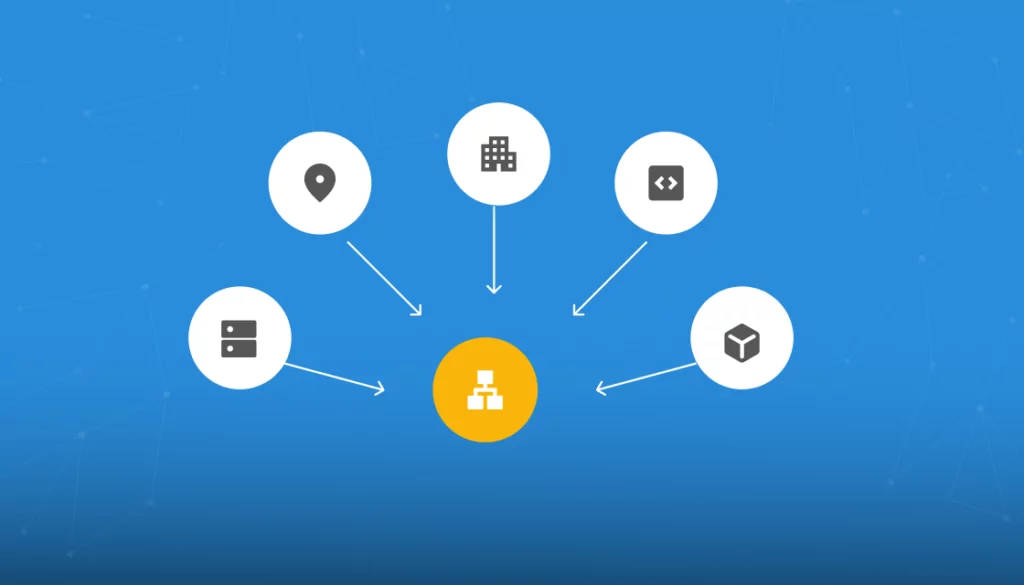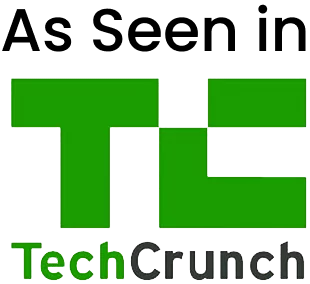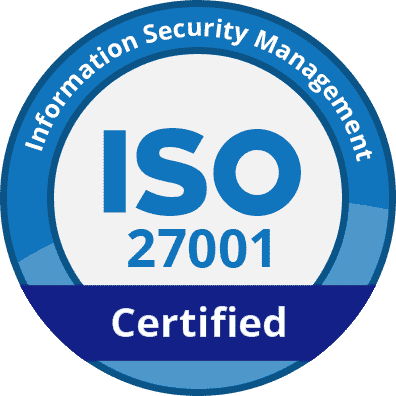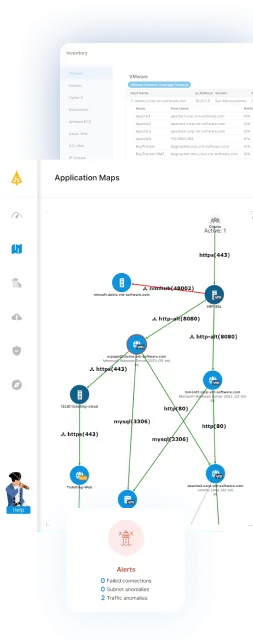What Is a Configuration Management Database (CMDB)?
A Configuration Management Database (CMDB) is a centralized repository that stores information about the various components of an IT system, known as configuration items (CIs). These CIs can include hardware, software, and network components, among others.
The primary purpose of a CMDB is to provide a single source of truth for IT infrastructure, enabling organizations to manage assets and support IT service management (ITSM) processes like change management and incident resolution.
CMDBs play a critical role in maintaining an up-to-date, accurate view of the IT environment. They help IT teams understand relationships and dependencies between configuration items, enabling impact analysis and decision-making. Without a well-maintained CMDB, inconsistent IT configurations can lead to service disruptions and increased operational risks.
Table of Contents
ToggleWhat Is ITIL?
ITIL, the Information Technology Infrastructure Library, is a set of best practices for IT service management (ITSM) that focuses on aligning IT services with business needs. It provides a systematic approach to ITSM through a framework that covers various processes, functions, and roles within an organization.
ITIL’s main goal is to improve service delivery, enhance customer satisfaction, and achieve operational excellence by adopting standard practices. ITIL is structured around a service lifecycle, comprising five key stages: service strategy, service design, service transition, service operation, and continual service improvement.
By implementing ITIL methodologies, organizations can optimize their IT resources, reduce downtime, and achieve greater transparency in operations. ITIL is widely adopted and offers a flexible framework that can be customized to meet organizational needs.
Key Concepts in ITIL Related to CMDB
ITIL Configuration Management
ITIL configuration management is a process within the ITIL framework that focuses on maintaining information about CIs required for delivering IT services. It ensures that configuration data is recorded accurately and managed throughout its lifecycle. This involves identifying configuration items, detailing their attributes, and controlling any changes to them to maintain the desired state of services.
The process supports decision-making by providing data about the IT environment, helping organizations achieve consistency in their IT operations. It also enables proactive management of changes, minimizing risks of service disruption and improving overall IT service quality.
ITIL Service Asset and Configuration Management (SACM)
ITIL service asset and configuration management (SACM) is an integrated process that combines configuration and asset management. It ensures that assets and configuration items are accurately recorded, supporting the IT service management framework. SACM supports the control of assets, enabling organizations to manage cost and improve service performance.
SACM is crucial for managing the complex dependencies and relationships between CIs. By maintaining precise records of asset details and configurations, SACM improves service restoration times and supports problem management by providing reliable data for root cause analysis.

Lanir specializes in founding new tech companies for Enterprise Software: Assemble and nurture a great team, Early stage funding to growth late stage, One design partner to hundreds of enterprise customers, MVP to Enterprise grade product, Low level kernel engineering to AI/ML and BigData, One advisory board to a long list of shareholders and board members of the worlds largest VCs
Tips from the Expert
In my experience, here are tips that can help you better manage a CMDB within the ITIL framework:
- Prioritize CI relevance over quantity:
Rather than overloading the CMDB with every CI, focus on critical items that directly impact services. This keeps the database manageable and reduces noise, aiding faster root-cause analysis and clearer change impacts. - Establish lifecycle ownership for CIs:
Assign owners to oversee each CI throughout its lifecycle, from acquisition to decommission. This ensures responsibility for accuracy, updates, and data integrity, particularly during phases of rapid infrastructure change. - Integrate with incident response automation tools:
Link the CMDB with automation tools to simplify incident response. This can enable real-time data pulls from the CMDB when an incident arises, reducing diagnostic times and improving response accuracy. - Develop CI relationship templates for faster mapping:
Create templates for common relationships among CIs (e.g., server-to-application dependencies) to streamline mapping processes and ensure consistency. This can accelerate onboarding of new CIs and minimize mapping errors. - Incorporate change verification into CI updates:
Following significant changes, verify that CI details reflect the modifications. This can be through automated discovery tools or manual validation for high-stakes CIs, maintaining the CMDB’s reliability for impact analysis.
The Role of CMDB in ITIL Processes
Using a CMDB provides several advantages for implementing ITIL.
Change Management
In ITIL, change management focuses on controlling the lifecycle of changes to minimize disruption to services. A CMDB plays a crucial role in this process by providing detailed insights into the relationships and dependencies among configuration items. It allows change managers to assess the potential impact of changes accurately, enabling informed approval processes.
With a well-maintained CMDB, organizations can reduce risks associated with changes, ensuring that IT services continue to meet business needs. It improves the coordination between teams and helps in documenting all change requests and implementations.
Incident and Problem Management
Incident and problem management aim to restore normal service operation rapidly and manage underlying problems causing incidents. The CMDB supports these processes by offering insights into the configuration items involved in incidents. By tracing relationships between CIs, IT teams can conduct faster root cause analysis, leading to quicker resolutions.
Access to accurate, real-time configuration data helps IT professionals understand the environment better, making it easier to diagnose issues. This leads to improved customer satisfaction through reduced downtime and enhanced service reliability.
Asset Management
Asset management involves tracking and managing organization assets to optimize use and reduce costs. CMDBs support this process by providing a unified view of all IT assets, allowing organizations to manage their lifecycle effectively. The database ensures that all asset information is accurate and up-to-date, which is crucial for budgeting and planning purposes.
A well-maintained CMDB helps organizations avoid redundant asset purchases and ensure compliance with licensing agreements. It also improves accountability by defining ownership and responsibility for assets.
Release and Deployment Management
Release and deployment management aims to plan, schedule, and control the movement of releases to testing and live environments. The CMDB is integral to this process, offering an overview of the current system state and required updates. It aids in assessing the impact of releases on existing services, ensuring compatibility and reducing deployment risks.
CMDBs help simplify deployment processes by documenting all relevant configuration changes and dependencies. This ensures that new releases do not disrupt existing services and meet quality requirements.
Challenges of CMDB Within ITIL Framework
Here are some of the main challenges that may arise when using a CMDB with ITIL.
Data Quality and Accuracy
Poor data quality undermines the trustworthiness of the CMDB, leading to misinformed decision-making and increased risk of service disruptions. Ensuring accurate and up-to-date configuration data requires continuous effort, as outdated or incorrect data can lead to failed change implementations and troubleshooting.
Scope Creep
As organizations evolve, so do their IT environments, leading to the addition of more configuration items than initially planned. Unmanaged scope expansions can result in increased complexity and compromised data integrity, making it challenging to maintain accurate records and increasing the risk of overlooking critical CIs.
Relationship Mapping Complexity
Mapping and managing relationships between configuration items is inherently complex. Each CI can depend on multiple others, creating a web of dependencies that can be difficult to document thoroughly. Inaccurate relationship mapping can hinder impact analysis, leading to oversight in change or problem management, affecting service reliability.
Related content: Read our guide to IT mapping
Best Practices for CMDB Management in ITIL
Here are some of the ways that organizations can ensure the most effective management of their CMDB for ITIL processes.
Define Clear CMDB Scope
Establishing which configuration items to include helps to focus resources on maintaining essential data. This improves data quality and ensures the CMDB remains a reliable source of information. Aligning the CMDB scope with organizational goals aids in prioritizing information that directly impacts service delivery and operational efficiency.
Communicating the defined scope to all stakeholders ensures a shared understanding of CMDB objectives. Regular scope evaluations allow adaptation to changing business needs while preventing unnecessary complexity. By restricting the scope to vital CIs, organizations can concentrate efforts on maintaining and updating relevant data.
Use Automated Discovery Tools
Automated discovery tools help identify and record configuration items and their relationships, reducing the workload on IT staff and minimizing human error. They provide an up-to-date view of the IT environment, ensuring that changes in the infrastructure are instantly reflected in the CMDB.
The implementation of automated tools helps maintain data accuracy and integrity. They optimize workflow processes, enabling IT teams to focus more on strategic tasks rather than manual data entry.
Learn more in our detailed guide to CMDB tools
Define CI Relationships and Dependencies Clearly
Clear definition of configuration item (CI) relationships and dependencies is essential for a functional CMDB. It helps in understanding how different components interact, important for change impact analysis and troubleshooting. Properly mapped relationships enable IT teams to make informed decisions and manage the IT environment.
Organizations should use standards for documenting relationships, ensuring consistency and clarity. Regular review and verification processes are necessary to maintain accuracy, especially after implementing changes.
Leverage Reporting and Analytics
Advanced analytics can highlight trends, patterns, and anomalies within configuration data, aiding strategic decision-making. Effective use of reports enhances transparency, drives data-driven decisions, and supports continual service improvement initiatives.
Regular analysis of CMDB data can uncover potential issues, optimize resource use, and guide capacity planning efforts. Integrating analytics tools with the CMDB allows for real-time monitoring and reporting, equipping IT teams with actionable intelligence.
Implement Regular Audits and Validations
Conducting regular audits and validations is a best practice in maintaining a reliable CMDB. Frequent reviews ensure that configuration item data accurately reflects the current IT environment. These processes promote data integrity, enabling organizations to rely on CMDB insights for operational decisions and strategic planning.
Audits help identify discrepancies, outdated records, and potential areas for improvement within the CMDB. Validation processes involve cross-checking data against physical and logical inventories, ensuring consistency and trustworthiness.
Faddom: The Lightweight CMDB Alternative
While traditional Configuration Management Databases (CMDBs) offer a centralized repository for IT system components, they can be complex to maintain and often require significant resources. Faddom provides a more streamlined approach to managing IT infrastructure. As an agentless, real-time application dependency mapping solution, Faddom offers the same visibility into your IT environment without the complexity of a traditional CMDB.
Faddom’s lightweight, automated solution discovers your IT assets, business applications, and dependencies with minimal setup and no need for ongoing manual updates. It enables IT teams to stay on top of changes, optimize resources, and ensure compliance with security and operational requirements. This makes it a perfect alternative to the traditional CMDB, especially for organizations looking for a faster, more straightforward solution without sacrificing reliability or detail.
Curious about how it works? Start your free trial using the form to the right of this article!







